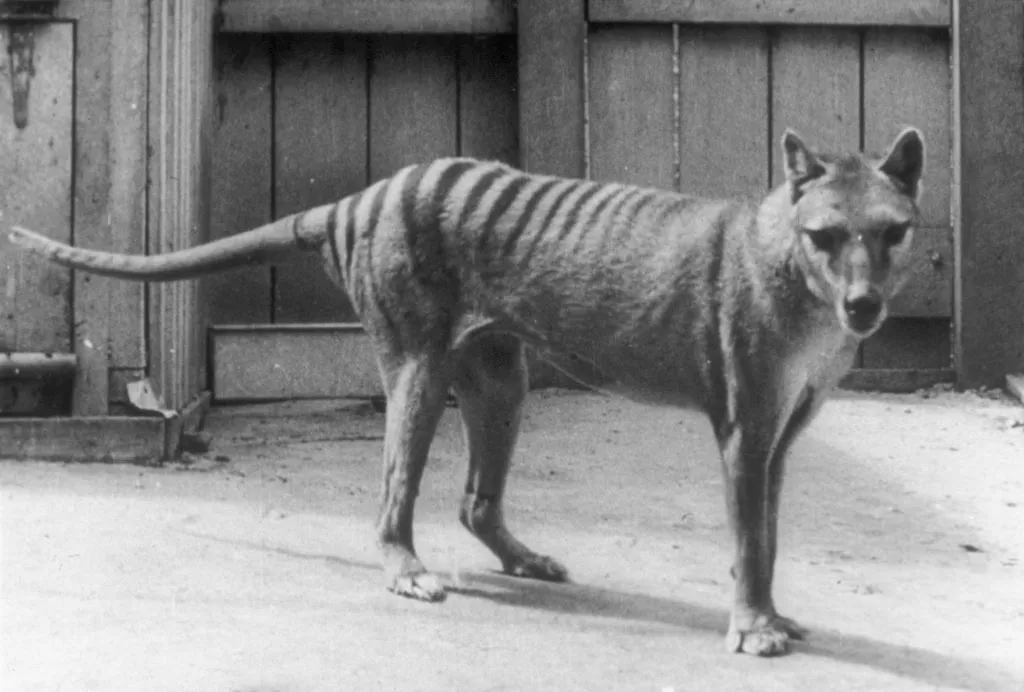‘Endling’, perhaps the saddest word you have never heard of. This is the term used to describe the very last member of a species (or subspecies) before it finally goes extinct.
The word was actually first coined at a convalescent centre in the 1990’s, when physicians saw the need for a word to describe the last person surviving in a family line, or the last survivor of a species.
This lonely word is now only really associated with those animals that are the last known of their kind, after the rest of their species was pushed to extinction as a result of human activity.
Read on to find out more about these remarkable individuals, often with names and fascinating stories – the loneliest animals in the world.
The loneliest animals in the world
Martha the passenger pigeon

The tale of the passenger pigeon is perhaps particularly sad, as they were once one of the most numerous birds in the world. These birds could once be seen migrating in massive flocks over the forests of eastern North America, and at one point there may have been as many as 5 billion of them. So how did that vast number fall to just one, and then zero?
The simple answer is, we ate an awful lot of them. Pigeons were long-hunted for food in North America by native peoples, but this hunting greatly intensified after the arrival of European colonists, and their meat eventually became commercialised on a huge scale.
In addition to hunting, their decline was hastened by habitat loss, as the forests they nested, roosted and fed in were rapidly decimated. Eventually there was just one left, Martha, a female who lived her whole life in captivity and eventually died aged 28 at Cincinnati Zoo in 1914.
The last quagga

Once thought to be a distinct species, but now known as a subspecies of the plains zebra, quaggas once roamed the grasslands of South Africa.
They stood about 4 foot 5 inches at the shoulder and looked like a cross between a zebra and a horse, with the characteristic stripes only present at the front of the body. As with passenger pigeons, quaggas were extensively hunted following European settlement, and given their already restricted range, this was enough to push them to the brink.
Quagga quickly became extinct in the wild, with the last known population dying out by 1878. The last captive quagga, housed in Amsterdam died just 5 years later. The significance of this event was not recognised at the time however, with the zoo anticipating that they could just get another from the wild. They were sadly mistaken.
Later, English naturalist Henry Bryden wrote “That an animal so beautiful, so capable of domestication and use, and to be found not long since in so great abundance, should have been allowed to be swept from the face of the earth, is surely a disgrace to our latter-day civilization."
“Benjamin” the thylacine

Thylacines, also known as Tasmanian tigers, were carnivorous marsupials that were once native to the Australian mainland, Tasmania, and New Guinea. Although dying out in Australia and New Guinea around 3,500 years ago, there remained a sizeable population in Tasmania.
- 10 long-lost animals de-extinction scientists are attempting to bring back from the grave
- Should the Tasmanian tiger live again? Why bringing back the extinct thylacine COULD be a wildlife game-changer
That is until… the Europeans came along (sensing a theme here perhaps?). A population of around 5,000 quickly shrunk to near zero when they began to be perceived as a threat to livestock and a bounty was put on their heads. Its decline was brought about both by the relentless efforts of farmers and others who wanted the bounty of £1 per head, and by the spread of human-introduced diseases in the already vulnerable population.
The last known thylacine to be killed in the wild was shot by a farmer in 1930, leaving only captive specimens. The very last known thylacine – the endling – lived at a zoo in Tasmania until its death in 1936. Although a later rumour suggested it was named Benjamin, this thylacine was in fact a female. And if her life story wasn't sad enough, it is believed that she died as a result of poor housing and neglect.
Lonesome George the last Pinta Island tortoise

Lonesome George was a was a male Pinta Island tortoise, from the island of Pinta, which is one of the Galapagos islands, lying west of South America. At the end of his life he weighed a sizable 75kg and was also the last remaining member of his sub- species. Not only was he very large and exceptionally rare, he was also extraordinarily long lived, so perhaps not always lonely.
George lived from 1910 until 2012, so a ripe old age of 102. Until George was discovered in 1971 it was however assumed that the subspecies was already extinct, as none had been seen in the preceding few decades. He was moved to a research station on a nearby island for his own safety. Efforts were made to mate him with females from a closely related subspecies so that some of his genetic legacy could be preserved, but sadly all these efforts ultimately failed.
Booming Ben the heath hen

Heath hens (Tympanuchus cupido cupido) were a sub-species of the prairie chicken and were once found on the heathlands of coastal North America, from New Hampshire to Northern Virginia. Like a few on this list their decline was primarily caused by hunting. Once extremely common they were hunted for food intensively by European settlers and so their numbers began to free-fall. Finally due to a combination of this hunting pressure and habitat loss, there were no heath hens left on the mainland.
Only a population of around 300 were left on the island of Martha’s Vinyard. This population was not much luckier however, falling prey to feral cats and poaching until they became vanishingly rare. The remaining few of these ill-fortuned birds were wiped out by fire and then an influx of predatory goshawks. Eventually, and despite various concerted efforts to save them, there was just one left, a male nicknamed Booming Ben.
The last Vietnamese Javan rhinoceros
This subspecies of the Javan rhinoceros once lived in Laos, Cambodia, Thailand, Malaysia, and Vietnam. Although fairly little is known about this subspecies, their decline and eventual extinction has been primarily attributed to poaching. The demand for rhino horn by the illegal wildlife trade, principally for use in Chinese traditional medicine, is a threat that affects all rhino species and the Vietnamese Javan rhinoceros was no exception. Loss of habitat due to agriculture was also likely a factor in their decline. The very last known individual was shot by a poacher in 2010, leading scientists to believe the subspecies is now no more.
Toughie the Rabbs' fringe-limbed treefrog

This adorable little fellow is the last known Rabbs' fringe-limbed treefrog, a species that winked out of existence with his death in 2016. Mind you, the species itself had only been discovered just 11 years previously, found only in the cloud forests above a specific town in central Panama.
Toughie, named for his somewhat aggressive nature and dislike of being handled, was brought to the USA as part of a rescue mission to save amphibians from a deadly fungus outbreak that was causing destruction to their home populations. For some time he lived with other members of his species, at Atlanta Botanical Garden. Unfortunately, his attempts to reproduce with a female did not produce any living offspring, and eventually he was the only one left in the world.
Turgi the Polynesian tree snail
Partula turgida was a species of small, yellow-brown, tropical land snails, endemic to a small island in French Polynesia. Their story is akin to many on this list, in that they declined in the wild, were reduced to a small captive population, and then only one.
What is not alike however is that these snails were not killed off by hunting, but by a microscopic parasite. After extinction in the wild, due in part to the introduction of larger, predatory snails to the island, 296 individuals were kept in captivity at London Zoo.
They were part of a breeding programme that was supposed to revive the species. Astonishingly and upsettingly, this fairly sizeable number was wiped out completely in just 21 months.
The very last one was nicknamed ‘Turgi’, who stopped moving forever on the 1st January 1996. Postmortems on five individuals of this captive population (including Turgi) revealed that they had all died due to infection by a unicellular parasite called Steinhausia. It is believed that this is the first definitive report of an infectious disease causing the extinction of a species.
Sudan, the last male northern white rhinoceros
Although Sudan, a male northern white rhino who died on the 19th March 2018 aged 45, was not the very last member of his subspecies, he was the last male.
There are only two individuals left today, Najin and Fatu, and they are both female. Because they now cannot reproduce, this means that the subspecies is functionally extinct. Sudan’s sperm was however preserved, in the hopes that he could still one day have offspring.
- How different are northern and southern white rhinos?
- Scientists may be about to save the world's rarest rhino. Here's what they're doing
This will however have to be done via IVF, using Najin and Fatu’s eggs, and implanted into a surrogate southern white rhino female, as neither of the two northern white rhino females are now able to carry a pregnancy. These two remaining hold-outs of the subspecies now live at the Ol Pejeta Conservancy in Kenya, protected at all times by armed guards.
The call of the last known Kauaʻi ʻōʻō
Not only was this endling the last of its species, it was also the last of its entire genus, ending a line that had gone unbroken for millennia. The Kauaʻi ʻōʻō was found only on the Hawaiian island of Kauaʻi, nesting in the cavities of trees in densely forested canyons. Their decline and eventual extinction was caused by a combination of factors, including deforestation, disease, and the introduction of predators. All of these things forced them to move to higher ground, where there were very few cavities for them to nest in. The species was last seen in 1985, and its distinctive flute-like call was last heard in 1987. The presumed death of this last individual marks the only extinction of an entire avian family in over 500 years.
